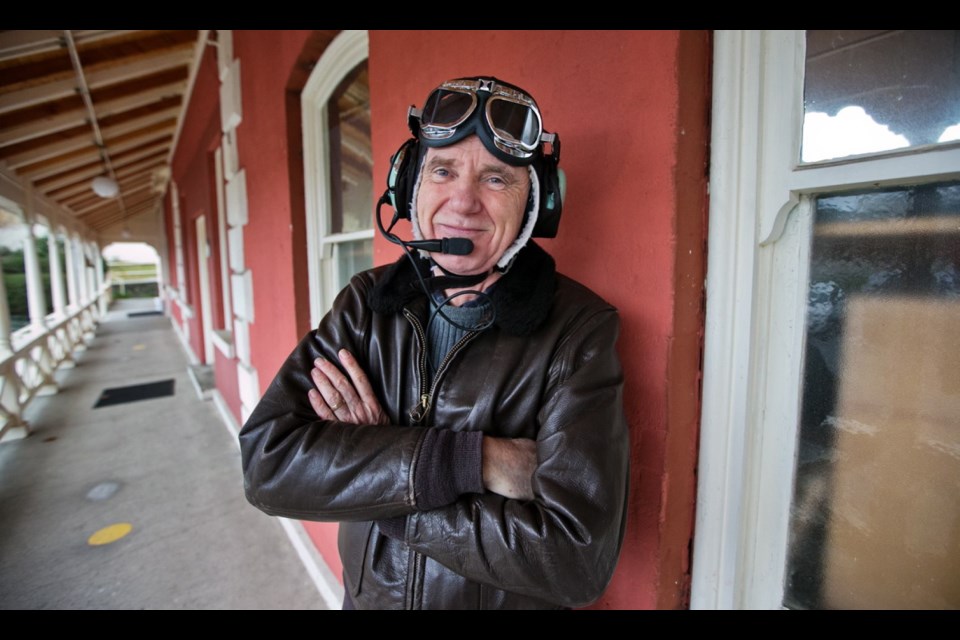A retired Canadian Forces pilot from Central Saanich and three of his flying friends are planning to commemorate the Battle of Vimy Ridge with a fly-past in vintage First World War biplanes.
J. Paul O’Reilly, 66, and his pals are all owners of replica Nieuport 11s, a fighter aircraft from the First World War.
They are now looking for sponsors, and hopefully Canadian government help, to ship the aircraft to France and fly the aircraft in formation over the Vimy Ridge monument in April 2017.
It would mark the 100th anniversary of the famous battle where Canadian troops triumphed in a costly but strategically important victory.
“It would honour the people of that era who made some terrible sacrifices,” O’Reilly said this week.
“Vimy also established the Canadian military as a stand-alone fighting unit,” he said. “It was the first real battle that was all Canadian force, from the general down to the privates.”
O’Reilly is originally from Nova Scotia and joined the Canadian Forces in his early 20s because he wanted to fly. During his career he racked up about 6,500 hours flying twin-engine planes and helicopters.
His Nieuport pals, ages 57 to 68, are also retired Canadian Forces pilots. Peter Thornton is now an airline pilot and lives in Chilliwack. Alvin Jasper lives in Ferndale, Wash., and Allan Snowie lives in Bellingham.
The pilots came by their replica Nieuports by combination of hobby-style interest and luck. All four continue to fly for fun and are interested in historic aircraft.
They heard about an entire squadron of First World War replicas being sold off at bargain prices in Oregon.
All the planes were originally built from kits and produced by a company in Edmonton in 7/8ths scale.
Originally, the four assumed the kits were 7/8ths original scale because of the diminished horsepower of the engine. It’s a Volkswagen car engine, with 65 horsepower, instead of the original 85 hp rotary engine.
But more research revealed the kit maker bought the wheels for the landing gear from a company in New York that made them for food carts. Those wheels just happened to be 7/8ths the original size, and the rest of the plane were adjusted to match.
The planes are now sitting in Bellingham, Wash., and registered to the American residents. They are also locked in a cross-border legal limbo, according to O’Reilly.
He said American aviation law will not allow a foreign resident to register an American aircraft. So O’Reilly and his friend in Chilliwack can’t take documented ownership of their planes.
Meanwhile, Canadian aviation law won’t allow a foreign, home-built aircraft to be registered until it has logged at least 100 hours in the air. Both O’Reilly and his Chilliwack friend are less than 10 hours short.
But they are confident they can make up the missing hours by this summer when they plan to start doing local air shows, such as those in Comox and Abbotsford.
In fitting out their planes, all have painted them in historic markings to commemorate specific flyers or units.
O’Reilly chose a pilot by the name of Alan Duncan Bell-Irving of Vancouver, who stopped flying after he was injured.
But Bell-Irving continued with the air force to become air commodore in the Royal Canadian Air Force and served in the Second World War.
Other replica markings are of Albert Ball, a famous English flyer killed in 1917 after scoring 44 victories; Red Mulock, a Winnipeg pilot who flew with the Royal Naval Air Service; and the markings of the Lafayette Escadrille, a French unit comprised of American pilots.
In doing research on their pilots and their units, O’Reilly said they came up with some happy coincidences — from a historical point of view.
Bell-Irving’s and Ball’s unit, of what was then the Royal Flying Corps, was No. 60 Squadron, which for a time was stationed only about 15 kilometres from Vimy Ridge.
While stationed there, Bell-Irving and Ball were joined by another Canadian pilot, Billy Bishop. On June 2, 1917, Bishop flew from that field to attack a German airfield behind enemy lines, a feat that earned him the Victoria Cross.
O’Reilly said he has searched Google Earth and found that particular field is still there and being farmed.
He wonders if the Canadian government can be convinced to approach the owner of the field and rent it for the summer of 2017. Canadian cadets, dressed in period uniforms, could then operate a mock No. 60 squadron with the Nieuports flying demonstrations.
O’Reilly said he and his three friends will be travelling to Ontario this month to visit the Great War Flying Museum in Brampton, looking for support there. The museum also has a Sopwith 1 1/2 Strutter aircraft that would make a great addition to the Vimy fly-past.
O’Reilly estimates the cost of transporting the aircraft and the fly-past could be anywhere from $500,000 to $1 million. And again, he is hoping the Canadian government can help.
“If you don’t ask you don’t get,” he said.
For more information, go to escadrillenorwest.org.
